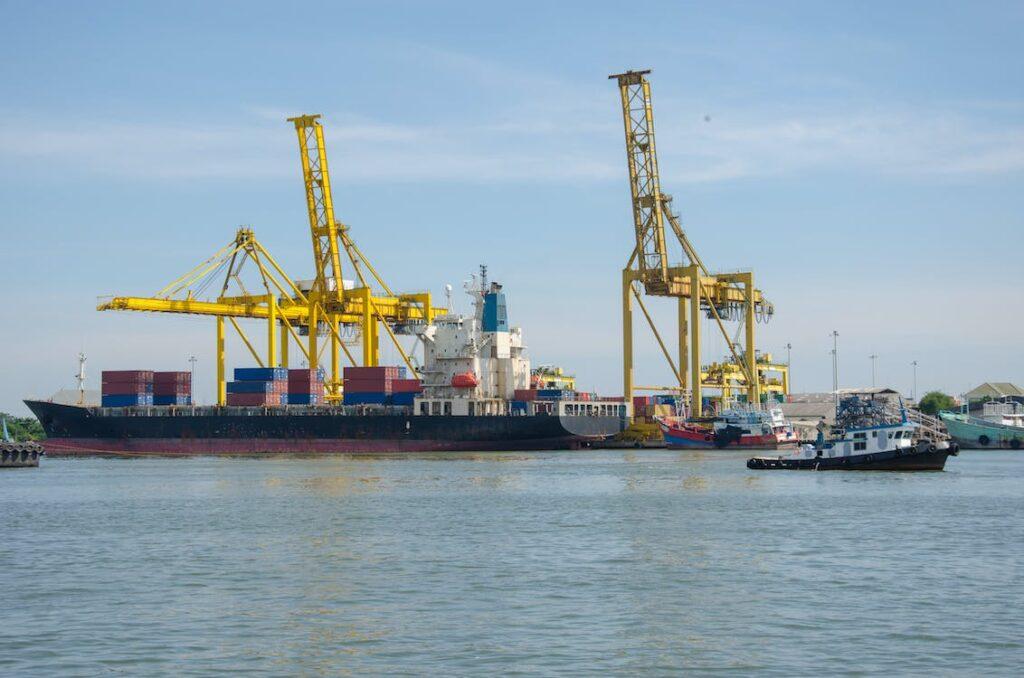In the current landscape of thriving global trade, ports serve as the backbone of commerce. With their increasing significance, the demand for their efficient and sustainable operation has grown as well.
Enter smart port technologies, the modern solution that combines technology with maritime know-how to boost efficiency while minimizing environmental impact.
Understanding Smart Port Technologies
The Evolution of Ports
Traditionally, ports were labor-intensive and operated with minimal technological support. However, the need for increased efficiency and sustainability has driven the evolution of ports into “smart” entities.
What are Smart Port Technologies?
Smart port technologies encompass a range of innovations, including the integration of Internet of Things (IoT) sensors, automation, renewable energy sources, and advanced data analytics. These technologies work in harmony to optimize operations and minimize environmental impact.
Benefits of Smart Port Technologies
Smart port technologies offer a multitude of benefits, and one of the most significant advantages is their remarkable reduction in environmental impact. Here’s a closer look at how they achieve each benefit:
- Environmental Impact Reduction
One of the primary advantages of smart ports is their significant reduction in environmental impact. With real-time data from environmental impact monitors, ports can actively track and minimize their carbon emissions, noise pollution, and waste generation.
- Enhanced Operational Efficiency
Smart ports streamline processes, leading to quicker turnarounds for vessels and reduced congestion. Advanced traffic management systems ensure smooth traffic flow, reducing idle times for ships waiting to dock.
- Improved Safety
Automation and robotics enhance safety by reducing the risk of accidents, particularly in high-risk areas such as container handling and cargo transport.
Key Components of Smart Ports
Efficiency is at the core of smart port technologies, and their impact on operations is substantial. Here are the key components of smart ports in detail:
IoT Sensors and Data Analytics
IoT sensors serve as the eyes and ears of smart ports. These sensors are strategically placed throughout the port and on vessels to collect a wealth of data:
- Weather and Environmental Sensors: IoT sensors monitor weather conditions, including wind speed, temperature, and precipitation. Environmental sensors track air and water quality, enabling ports to assess their environmental impact continually.
- Equipment Health Monitoring: Sensors on port machinery and vehicles monitor their performance in real-time. Data analytics can predict when maintenance is required, preventing costly breakdowns.
- Traffic and Cargo Tracking: IoT sensors track vessel movements and cargo handling operations. This data aids in optimizing traffic flow and cargo handling processes.
- Data Analytics: The data collected by IoT sensors is processed using advanced data analytics algorithms. These algorithms identify patterns, trends, and opportunities for optimization.
Automation and Robotics
Automation and robotics play a pivotal role in making ports smarter and more efficient:
- Automated Cranes and Vehicles: Smart ports often deploy automated cranes for container handling and autonomous vehicles for cargo transport within the port. These machines operate with precision, reducing human error.
- Unmanned Aerial Vehicles (UAVs): Some smart ports use UAVs for aerial surveillance, cargo inspection, and environmental monitoring. UAVs provide a bird’s-eye view of port operations.
- Drones for Security: Drones equipped with cameras and sensors enhance port security by providing real-time surveillance of the perimeter and identifying potential security threats.
Renewable Energy Integration
To reduce their environmental footprint, smart ports increasingly adopt renewable energy sources:
- Solar Panels: Solar panels installed on port buildings and structures generate clean electricity. This energy can power various port operations, reducing reliance on fossil fuels.
- Wind Turbines: In windy coastal areas, wind turbines can harness wind energy to supplement the port’s power needs. Excess energy can be stored or redirected to the grid.
Advanced Traffic Management Systems
Efficient traffic management is crucial for optimizing port operations:
- Vessel Traffic Management: Advanced systems track vessels’ positions and movements in real-time. Ports can allocate berths and resources efficiently, reducing congestion and wait times.
- Predictive Traffic Analysis: Data analytics help predict traffic patterns and vessel arrivals. Ports can plan and allocate resources more effectively, reducing bottlenecks.
- Sustainable Transportation: Some smart ports encourage sustainable transportation options, such as electric or hybrid trucks, for the movement of cargo within the port. This further reduces emissions and environmental impact.
Challenges and Solutions
Smart port tech brings great benefits but also poses challenges. Here, we’ll delve into these issues and explore solutions.
- Security Concerns
Challenge: Smart ports are vulnerable to cyberattacks, which can disrupt operations and compromise data.
Solution: Implement robust cybersecurity measures, provide employee training, and foster collaboration with cybersecurity experts and government agencies to maintain a secure information system.
- Initial Investment
Challenge: Transitioning to smart port technologies requires a significant upfront investment, which can be challenging to justify.
Solution: Conduct comprehensive cost-benefit analyses, explore public-private partnerships, and consider financing options like loans, grants, and incentives.
- Workforce Transition
Challenge: Automation in smart ports may lead to job displacement among traditional port workers.
Solution: Implement retraining and reskilling programs, promote labor-management collaboration, and establish social safety nets to support affected workers.
Conclusion
Smart port technologies are transforming the maritime industry by enhancing efficiency and reducing its environmental impact. Ports that embrace these innovations are not only improving their operational performance but also contributing to a greener, more sustainable future.
For more insightful business articles, check out BlogClus’ Blog today!

